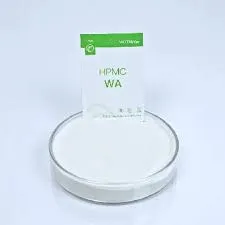
Aug . 18, 2024 14:29 Back to list
Applications and Benefits of Hydroxypropyl Methylcellulose in Various Industries
Uses of Hydroxypropyl Methylcellulose
Hydroxypropyl methylcellulose (HPMC) is a versatile polymer derived from cellulose, a natural polymer found in plant cell walls. This compound is widely used in various industries due to its unique properties, including non-toxicity, excellent thickening and water-retaining capabilities, and stable viscosity under different temperatures and pH levels. Below, we will explore some of the primary applications of HPMC in various fields, such as the food industry, pharmaceuticals, construction, and cosmetics.
1. Food Industry
In the food sector, HPMC serves multiple functions, primarily as a food thickener and emulsifier. It is commonly employed in gluten-free products to improve texture and mouthfeel, helping to mimic the properties of gluten in bread and baked goods. Furthermore, HPMC acts as a stabilizer in sauces and dressings, preventing ingredient separation and maintaining uniformity. Its ability to form a gel when combined with water makes it a popular choice in the production of low-fat foods, where it can effectively replace fats while preserving taste and texture.
HPMC plays a critical role in the pharmaceutical industry, particularly in drug formulation and delivery systems. It is used as a binder in tablet formulations, providing cohesion and integrity to the pharmaceutical product. It also functions as a controlled-release agent, allowing for a gradual release of medications over time. This controlled release can enhance the bioavailability of drugs and improve patient compliance by allowing for less frequent dosing. Moreover, HPMC is used in ophthalmic solutions, acting as a lubricant and moisturizer for dry eyes, thus improving comfort for users of contact lenses and other ocular products.
uses of hydroxypropyl methylcellulose

3. Construction
In the construction industry, HPMC is used in various building materials, including cement, mortars, and plasters. Its addition to these materials improves workability and enhances adhesion, ensuring a lower likelihood of cracking and increased durability of the final structure. HPMC's water-retaining properties also help prevent the rapid drying of masonry products, allowing for better curing and stronger end products. Additionally, it helps in producing self-leveling compounds, which are crucial for creating a smooth, flat surface before laying floors.
4. Cosmetics
The cosmetic industry benefits from HPMC's thickening and stabilizing properties, where it is used in a variety of products such as creams, lotions, and gels. HPMC enhances the texture and consistency of these products, contributing to a pleasant feel during application. It also forms a film on the skin, improving moisture retention and providing long-lasting hydration in skincare formulations. Moreover, due to its non-toxic nature and high compatibility with other ingredients, HPMC is favored in formulating products for sensitive skin.
Conclusion
Hydroxypropyl methylcellulose is a multifunctional polymer that finds extensive applications across several industries, thanks to its unique properties and benefits. From enhancing the texture of food products to playing a crucial role in pharmaceuticals, construction materials, and cosmetics, its versatility cannot be understated. As industries continue to evolve and seek sustainable and effective solutions, the role of HPMC is likely to expand further, making it a staple ingredient in various formulations for years to come.
-
Versatile Hpmc Uses in Different Industries
NewsJun.19,2025
-
Redispersible Powder's Role in Enhancing Durability of Construction Products
NewsJun.19,2025
-
Hydroxyethyl Cellulose Applications Driving Green Industrial Processes
NewsJun.19,2025
-
Exploring Different Redispersible Polymer Powder
NewsJun.19,2025
-
Choosing the Right Mortar Bonding Agent
NewsJun.19,2025
-
Applications and Significance of China Hpmc in Modern Industries
NewsJun.19,2025







